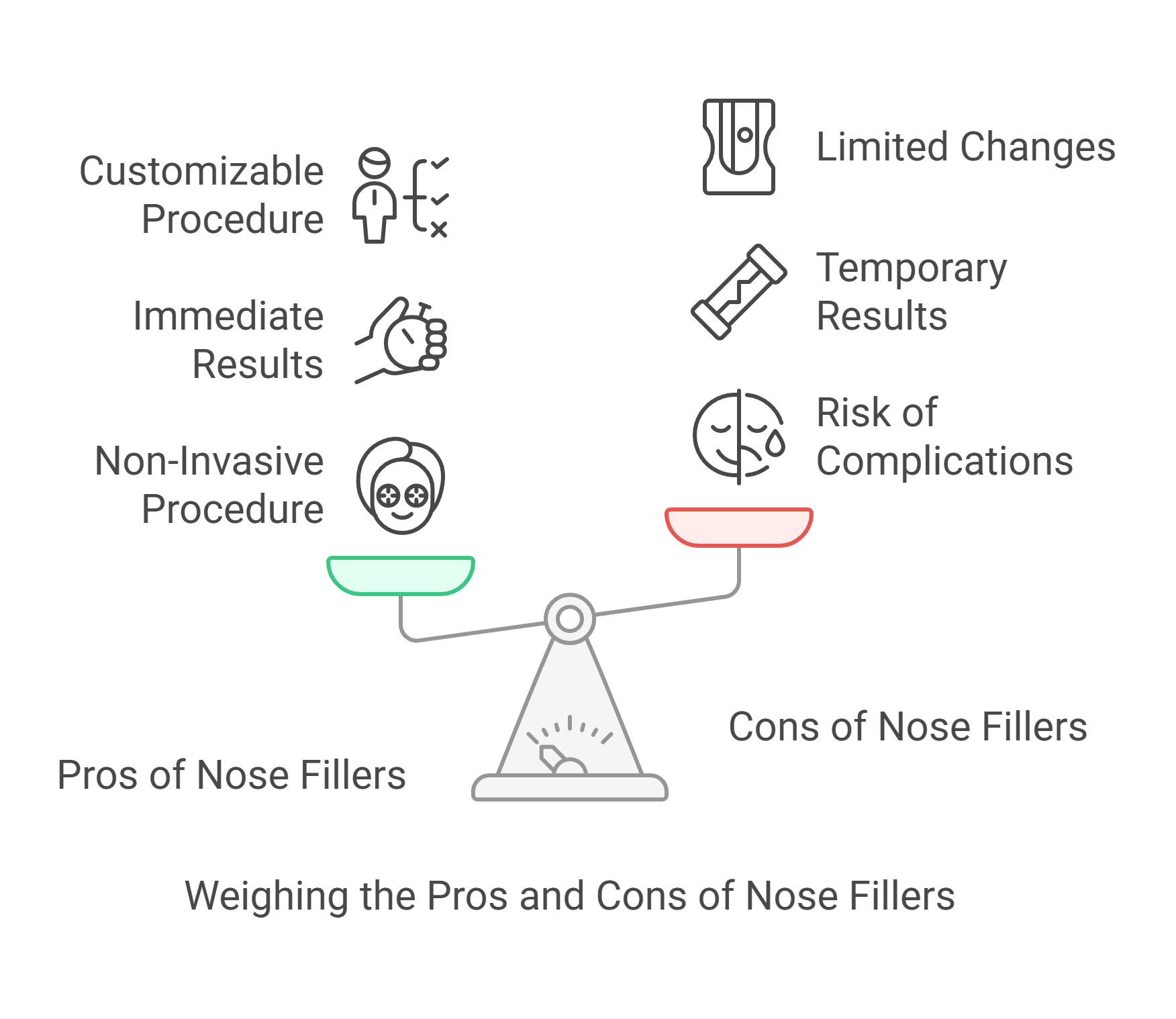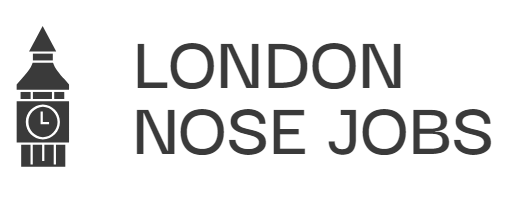If you’re pondering whether to go for a nose filler, you’re not alone. Many people are curious about this non-surgical option for altering the shape of their noses without going under the knife. But is it really worth it?
In this article, we’ll explore the ins and outs of nose fillers, their advantages and risks, and what you should consider before making a decision.
Key Takeaways
- Nose fillers are a non-invasive way to change the shape of your nose.
- Results are immediate, but they are temporary and typically last 6-12 months.
- While there are benefits, potential risks include side effects and complications.
- Nose fillers are not a substitute for surgical options if significant structural changes are desired.
- Consulting with a qualified practitioner is essential for safety and optimal results.
Understanding Nose Fillers
What Is Nose Filler?
Basically, it’s a non-surgical procedure where dermal fillers are injected into your nose to temporarily change its shape. Think of it as a liquid nose job.
It’s a way to make minor adjustments without going under the knife. It’s pretty popular because it’s less invasive than traditional surgery.
How Does It Work?
A practitioner injects a filler, usually hyaluronic acid, into specific spots on your nose. This filler adds volume, which can smooth out bumps, lift the tip, or even make your nose appear straighter.
The cool thing is, you’re awake during the whole thing, so you can actually see the results as they happen. If you don’t like something, it can be adjusted or even reversed. But keep in mind, it’s not permanent, lasting anywhere from a few months to a year.
Who Is a Good Candidate?
So who’s the ideal person for nose fillers? Well, it’s great if you’re looking for small tweaks to the shape of your nose. Maybe you have a slight dorsal hump you want to smooth out, or you want to lift the tip a bit. It’s also good if you’re not ready for surgery or want to test out how a different nose shape would look on you.
However, it’s not for everyone. If you want to make your nose smaller or correct breathing problems, then surgery is probably a better option. Also, if you have really thick skin or major structural issues, fillers might not give you the results you’re after.
It’s important to have realistic expectations. Nose fillers can make subtle improvements, but they can’t perform miracles. If you’re unsure, chat with a qualified practitioner to see if it’s right for you.
Benefits of Nose Fillers
Non-Invasive Procedure
One of the biggest draws of nose fillers is that they’re non-invasive. Unlike a traditional rhinoplasty, there’s no need for incisions, general anaesthesia, or extensive downtime.
It’s a walk-in, walk-out kind of treatment, which is pretty appealing if you’re a bit nervous about going under the knife. You can usually get back to your normal routine pretty quickly, which is a massive plus for busy people.
Immediate Results
You’ll see the difference almost straight away. That’s right, no waiting around for weeks to see if the swelling goes down or if you like the new shape.
The changes are visible as soon as the procedure is done, so you can leave the clinic feeling confident and happy with your new look. Of course, there might be some minor swelling or redness initially, but that usually settles down within a day or two.
Customisable Outcomes
Nose fillers aren’t a one-size-fits-all solution. The practitioner can tailor the treatment to your specific needs and desired outcome. Whether you want to smooth out a bump, lift the tip of your nose, or add some symmetry, fillers can be used to achieve a subtle but noticeable improvement.
Plus, if you’re not completely happy with the results, the filler can be dissolved, giving you a level of control that you just don’t get with surgery.
Nose fillers offer a fantastic way to make small but impactful changes to your appearance without the commitment and risks associated with surgery. It’s all about enhancing your natural beauty and boosting your confidence in a safe and controlled manner.
Potential Risks and Considerations

Nose fillers aren’t without their potential downsides. It’s important to be aware of these before you jump in, so you can make a well-informed decision. It’s not all sunshine and perfectly contoured noses, unfortunately.
Common Side Effects
Okay, so what’s the lowdown on the usual suspects? Expect some redness, swelling, and maybe a bit of bruising around the injection site. It’s pretty standard, and usually fades within a week or so.
Some people also report tenderness or a slight ache. Nothing too dramatic, but definitely something to keep in mind if you’ve got a big event coming up. These are generally mild and temporary, but it’s still good to be prepared.
Serious Complications
Right, now for the stuff that’s less common, but more serious. The biggest worry is vascular occlusion, which is when the filler gets injected into a blood vessel and blocks it. This can cause skin necrosis (basically, the skin dying) or, in very rare cases, even blindness if it affects blood vessels in the eye.
Infection is another risk, as with any injection. That’s why it’s so important to go to someone who knows their stuff and uses sterile equipment. Allergic reactions to the filler itself are also possible, though not super common.
Consultation Importance
Don’t skip the consultation. It’s not just a formality. This is where you get to grill your practitioner about their experience, their qualifications, and how they handle complications.
They should be able to explain the risks in detail and answer all your questions. A good practitioner will also assess your nose and face to see if fillers are even the right option for you. If they’re not thorough, that’s a red flag.
Think of the consultation as your chance to do your homework. It’s better to be over-prepared than to end up with a botched nose job and a whole lot of regret. Ask questions, do your research, and don’t be afraid to walk away if something doesn’t feel right.
Comparing Nose Fillers to Surgical Options
Differences in Procedure
Okay, so you’re weighing up nose fillers versus a full-on surgical rhinoplasty? Let’s break down how these two differ. Nose fillers, often called a ‘liquid nose job’, involve injecting dermal fillers to reshape the nose. It’s non-surgical, meaning no incisions, no general anaesthetic, and a much quicker procedure – often done in under an hour.
Surgical rhinoplasty, on the other hand, is a proper operation. It involves making incisions to reshape the bone and cartilage. It’s more invasive and requires general anaesthesia.
Recovery Times
Recovery is where these two really diverge. With nose fillers, the recovery is minimal. You might have some redness or slight swelling, but most people go back to their normal activities pretty quickly.
Surgical rhinoplasty? Expect a longer recovery. There’ll be swelling, bruising, and you’ll probably need to wear a splint. It can take weeks, even months, to see the final results as the swelling subsides. Plus, there’s post-surgical pain to manage.
Long-Term Results
This is where surgical rhinoplasty has a clear advantage. Nose fillers are temporary; the results typically last from six months to two years, depending on the filler used and how your body metabolises it. You’ll need top-ups to maintain the look.
Rhinoplasty is permanent. Once the surgery is done and you’ve healed, the changes are lasting. However, it’s worth remembering that results can change over many years due to natural ageing.
Choosing between nose fillers and surgery really depends on what you’re after. Fillers are great for minor tweaks and seeing how you feel about changes, without the commitment of surgery. Surgery is for more significant, permanent changes, but comes with a bigger commitment in terms of recovery and potential risks.
Cost Implications of Nose Fillers
Average Pricing
Alright, let’s talk money. Nose filler costs can vary quite a bit, and it’s not always a straightforward answer. Generally, you’re looking at a price range from £300 to £800 per treatment in the UK. But remember, this is just a rough estimate.
The final cost will depend on several things, like where you are in the country (London prices tend to be higher), the type of filler used, and the practitioner’s experience.
Factors Influencing Cost
So, what exactly makes the price jump around? Here’s a breakdown:
- Type of Filler: Different fillers have different price points. Hyaluronic acid fillers are common, but some brands are pricier than others.
- Practitioner’s Expertise: A highly experienced and qualified practitioner will likely charge more for their services. It’s worth paying extra for safety and skill.
- Location: Clinics in major cities or affluent areas often have higher overheads, which translates to higher prices.
- Amount of Filler Needed: If you need more filler to achieve your desired result, the cost will increase accordingly.
- Consultation Fees: Some clinics charge for the initial consultation, while others offer it for free.
Insurance Considerations
Nose filler is almost always considered a cosmetic procedure, which means it’s not covered by the NHS or private health insurance. You’ll need to pay for the treatment out of your own pocket. It’s always worth checking your policy, but don’t get your hopes up too high.
Some clinics offer finance options or payment plans to help spread the cost, so it’s worth asking about those if you’re concerned about the upfront expense.
It’s important to remember that cheaper isn’t always better when it comes to medical procedures. Prioritise finding a qualified and experienced practitioner, even if it means paying a bit more. Your safety and results are worth the investment.
Finding a Qualified Practitioner
Choosing the right person to administer nose filler is, like, super important. It’s about finding someone who knows their stuff and can give you the results you’re after, safely.
Importance of Credentials
Right, so first things first: check their credentials. I mean, really check them. Are they a qualified doctor, nurse, or cosmetic surgeon? Do they have specific training in administering facial fillers?
Don’t be shy about asking for proof. It’s your face we’re talking about! Make sure they are registered with a professional body.
Questions to Ask
When you meet a potential practitioner, have a list of questions ready. Here are a few to get you started:
- How many nose filler procedures have you performed?
- Can I see before-and-after photos of your previous patients?
- What type of filler do you use, and why?
- What are the potential risks and side effects?
- What is your plan for managing complications, should they arise?
It’s also a good idea to ask about their approach to aesthetics. Do they understand facial anatomy? Do they have a good eye for balance and proportion? You want someone who will enhance your natural features, not give you a weird, unnatural look.
Post-Procedure Care
Find out what kind of aftercare they offer.
- Will they be available to answer your questions after the procedure?
- What should you do if you experience any problems?
A good practitioner will provide clear, detailed instructions on how to care for your nose after the filler is injected. They should also schedule a follow-up appointment to check on your progress and address any concerns. Basically, you want someone who’s going to look after you, not just take your money and run.
Patient Experiences and Testimonials
It’s one thing to read about the technical aspects of nose fillers, but it’s another to hear directly from people who’ve actually had the procedure. Real-life experiences can offer valuable insights into what to expect, both good and bad. Let’s have a look at what some patients have to say.
Success Stories
Many individuals report high satisfaction with nose filler treatments. They often highlight the subtle yet significant improvements in their nose shape and overall facial harmony.
For example, some patients have shared that they feel more confident in photos and social situations after the procedure. The speed and convenience of the treatment are also frequently praised.
Challenges Faced
It’s important to acknowledge that not every experience is perfect. Some patients report minor side effects like swelling or bruising that last for a few days. Others might find that the results don’t quite match their initial expectations, highlighting the importance of clear communication with the practitioner beforehand. A few individuals have also mentioned the need for touch-up appointments to maintain the desired outcome.
Advice from Previous Patients
If you’re considering nose fillers, here’s some advice gleaned from those who’ve gone before you:
- Do your research: Find a qualified and experienced practitioner with a strong portfolio.
- Have realistic expectations: Nose fillers can enhance your appearance, but they won’t completely transform your face.
- Communicate openly: Discuss your goals and concerns with your practitioner to ensure you’re both on the same page.
It’s really important to listen to what other people have to say about their experiences. It can help you make a more informed decision and prepare yourself for what’s to come. Remember, everyone’s different, but learning from others can be incredibly helpful.
Conclusion
Whether nose fillers are worth it really comes down to what you want. If you’re after a subtle change without the hassle of surgery, then it could be a good option for you. It’s quick, relatively affordable, and you can see results almost immediately.
But remember, it’s not a permanent fix, and if you’re looking for major changes, surgery might be the better route. Always consult with a qualified professional to discuss your goals and any risks involved. Ultimately, the choice is yours, and it’s important to feel confident in whatever decision you make.
Frequently Asked Questions
What exactly is a nose filler?
A nose filler is a type of treatment where a special gel is injected into the nose to change its shape without surgery.
How does the nose filler treatment work?
The filler is injected into specific areas of the nose to smooth out bumps or change the shape, giving a more balanced look.
Who should consider getting nose fillers?
Good candidates for nose fillers are people looking for minor changes to their nose’s appearance without having surgery.
What are the main benefits of using nose fillers?
Nose fillers are non-invasive, provide immediate results, and can be tailored to meet individual needs.
Are there any risks involved with nose fillers?
Yes, there can be side effects like swelling or bruising, and in rare cases, more serious complications can occur.
How much do nose fillers typically cost?
The cost of nose fillers can vary based on the practitioner and location, but it’s generally less expensive than surgery.






